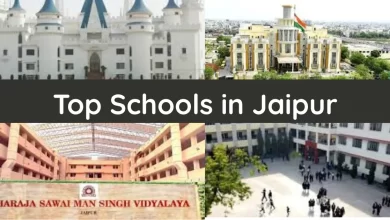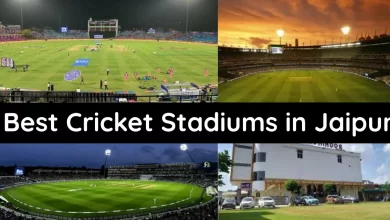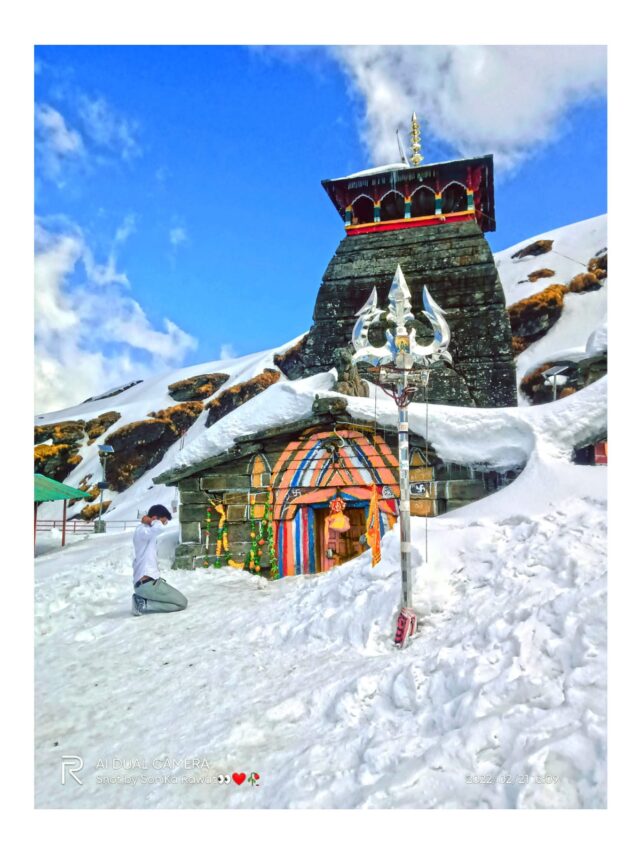Places to Visit in Jaipur: Forts, Museum, Palace – The Complete Guide
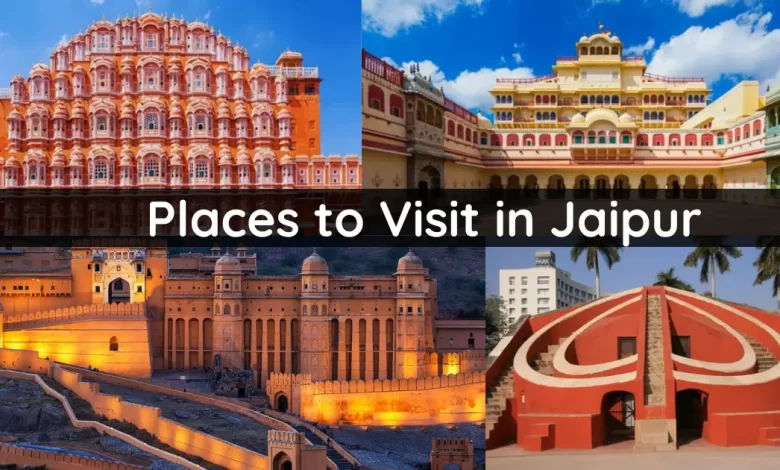
Table of Contents
INTRODUCTION

The heart of Rajasthan, Jaipur, famously known as the Pink City, is a vibrant blend of history, heritage, and royal majesty. As the capital of India’s largest state, Jaipur stands as a living testament to the rich cultural traditions and architectural brilliance of the Rajput period. Its unique terracotta pink structures, regal palaces, majestic castles, and bustling stores paint a picture of a municipality that has gracefully saved its royal heritage while embracing agelessness.
Founded in 1727 by Maharaja Sawai Jai Singh II, Jaipur is n’t only a rigorously planned municipality but also a gateway to India’s regal history. From its admiration- inspiring monuments to colorful festivals and traditional cuisine, the municipality captivates millions of guests each time, making it one of the most popular rubberneck destinations. You’re in for a royal treat. From towering castles that echo tales of valor to intricately designed palaces that showcase the municipality’s regal history, Jaipur offers an unforgettable experience for every sightseer. In the sections below, we’ll explore the top rubberneck lodestones that make Jaipur a must- visit destination in India.
Here Are Top 10 Places To Visit In Jaipur
Would you like to continue with the Jaipur’s top attractions, starting with Historical Monuments ,Forts and Museums….?
1-Amber Fort

Amber Fort (also known as Amer Fort) is one of Jaipur’s most iconic landmarks and a UNESCO World Heritage Site. A masterpiece of Rajput-Mughal architecture, the fort is renowned for its grand courtyards, intricate carvings, and breathtaking views of the Aravalli hills.
History and Significance of Amber Fort
Built in the late 16th century by Raja Man Singh I, one of Emperor Akbar’s most trusted generals, Amber Fort served as the capital of the Kachwaha Rajputs before Jaipur city was established. Later rulers—Mirza Raja Jai Singh I in particular—improved and enlarged the fort.
Key Attractions at Amber Fort
- Sheesh Mahal (Mirror Palace)
- Diwan-i-Aam & Diwan-i-Khas
- Ganesh Pol
- Elephant Rides
- Panoramic Views
Best Time, Entry Fees, and Timings To Visit In Amber Fort
| Category | Details |
|---|---|
| Best Time to Visit | October to March |
| Entry Timings | 8:00 AM – 5:30 PM |
| Sound & Light Show Timings | English: 7:30 PM Hindi: 8:30 PM |
| Entry Fees | Indian Nationals: ₹100 Foreign Nationals: ₹550 Students (with ID): Discounts available |
| Elephant Ride | ₹900 – ₹1,200 (optional & seasonal) |
2-City Palace

The City Palace, located in the middle of Jaipur’s Old City, is an amazing example of Rajput and Mughal architecture that captures the luxury and beauty of graceful Rajasthan. Built between 1727 and 1732 by Maharaja Sawai Jai Singh II, the founder of Jaipur, this palace complex reflects centuries of regal history, cultural richness, and architectural brilliance.
Architectural Brilliance: A Fusion of Cultures
The City Palace is a fine example of architectural fusion—Rajput motifs, chhatris, and courtyards combined with Mughal-style arches, domes, and intricate carvings.
The entire complex is a maze of courtyards, gardens, and temples interspersed with lavish halls and pavilions. Every corner of the palace offers a glimpse into the luxurious lifestyle and refined tastes of Jaipur’s royal family.
Museums and Courtyards Inside the Palace
The City Palace houses several museums and galleries that preserve the royal legacy of the Kachwaha dynasty. Some of them include:
- Mubarak Mahal (Welcome Palace)
- Chandra Mahal
- Diwan-i-Khas (Hall of Private Audience)
- Diwan-i-Aam (Hall of Public Audience)
- Pritam Niwas Chowk (Peacock Courtyard)
How To Reach – Self-Drive Cars in Jaipur
Timings and Entry Fees To Visit In City Palace
| Category | Details |
|---|
| Day Visit Hours | 9:30 AM – 5:00 PM |
| Entry Fees – Indian Nationals | • Museum Only: ₹200 – ₹300 • Composite Ticket: ₹300 – ₹400 • Night Visit: ₹500 • Royal Grandeur (Chandra Mahal tour): ₹1,500 • Royal Splendor: ₹3,000 |
| Entry Fees – Foreign Nationals | • Museum Only: ₹700 – ₹1,000 • Composite Ticket: ₹700 – ₹1,250 • Night Visit: ₹1,000 – ₹1,250 • Royal Grandeur: ₹2,000 • Royal Splendor: ₹3,500 – ₹4,000 |
| Students / Children | • Indian (7–12 yr): ₹100–₹150 (museum); ₹200 (composite); ₹250 (night); ₹1,000 (Royal Grandeur); ₹1,500 (Royal Splendor) |
| Additional Charges | • Photography: ₹50 • Videography: ₹150 • Audio Guide: ₹200 • Golf Cart: ₹150 (as per some sources) |
3-Hawa Mahal

The Palace also called Hawa Mahal, is one of Jaipur’s most distinctive architectural gems.. Built in 1799, this unique five-story structure made from pink sandstone stands out with its ornate façade featuring 953 small windows, or jharokhas.
Designed in the shape of Lord Krishna’s crown, the palace resembles a delicate honeycomb and is a perfect example of Rajput and Mughal architectural fusion.
Historical Significance of Hawa Mahal
Hawa Mahal holds great historical significance as a symbol of Jaipur’s royal heritage and the socio-cultural norms of the 18th century. It stands today as a monument to both the aesthetic vision and functional design of Rajput architecture.
Timings and Entry Fees To Visit In Hawa Mahal
| Category | Details |
|---|
| Timings | Open daily: 9:00 AM – 5:00 PM Last entry: 4:30 PM |
| Entry Fees – Indian Nationals | General Entry: ₹50 per person Composite Ticket: ₹300 |
| Entry Fees – Foreign Tourists | General Entry: ₹200 per person Composite Ticket: ₹1,000 |
| Additional Fees | Photography: ₹10 (Indians) Photography: ₹30 (Foreigners) |
4- Jantar Mantar

The heart of Jaipur, Jantar Mantar is a UNESCO World Heritage Site and one of the most fascinating historical landmarks in the city.
Scientific and Historical Importance of Jantar Mantar
Jantar Mantar in Jaipur holds immense significance both scientifically and historically.It was built to improve astronomical calculations and create more accurate celestial measurements.
Jantar Mantar showcased remarkable innovation through 19 fixed stone instruments, each designed for specific astronomical functions—like tracking planetary movements, measuring time, predicting eclipses, and observing stars with the naked eye. The most famous of these is the Samrat Yantra, the world’s largest stone sundial, which can tell time with astonishing precision.
Best time to visit in jantar mantar and ticket information
| Category | Price per Person |
|---|---|
| Indian Residents | ₹50 |
| Indian Students | ₹15 |
| Foreign Nationals | ₹200 |
| Foreign Students | ₹100 |
Timings: Open daily from 9:00 AM to 4:30–5:00 PM
5-Nahargarh Fort
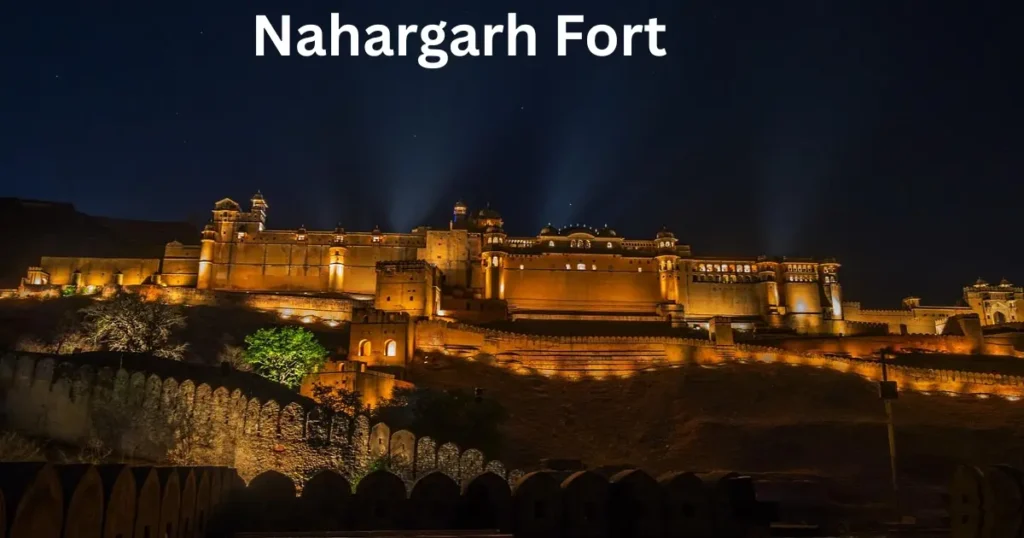
One of Jaipur’s most notable and charming forts is Nahargarh Fort. Originally known as Sudarshangarh, it was renamed Nahargarh, meaning “Abode of Tigers,” and was constructed in 1734 by Maharaja Sawai Jai Singh II, the founder of Jaipur.
History and legends surrounding the fort
Nahargarh formed a strategic triangle designed to protect Jaipur from invasions, especially during the turbulent Mughal and Maratha periods.
Beyond its historical significance, Nahargarh Fort is enveloped in mystery and legend. Local folklore tells of a restless spirit—Prince Nahar Singh Bhomia—who is believed to have haunted the site during its early construction. It is said that each time work on the fort began, the walls would inexplicably collapse. According to legend, the ghost of the prince demanded that the fort bear his name before allowing construction to proceed peacefully. In order to fulfill with this request, the fort was renamed Nahargarh, which means to “Abode of Nahar,” and a tiny shrine was constructed inside to appease his spirit.
A Perfect Spot for Sunset Views and Photography
For good reason, many people consider Nahargarh Fort to be among the most beautiful spots in Jaipur to see a sunset. Perched high on the Aravalli Hills, the fort provides sweeping panoramic views of the entire Pink City, which come alive in golden hues as the sun begins to set.
Even if you’re not into photography, the calm and serene ambiance at sunset makes it a memorable experience.
Nahargarh Fort – Best Time to Visit & Entry Information
| Visiting Hours | 10:00 AM – 5:30 PM (Daily) |
| Best Season | October – March |
| Ideal Visit Time | Morning: 10:00 AM – 12:00 PM |
| Late Afternoon: 4:00 PM – 5:30 PM |
6-Jaigarh Fort

Built on Cheel Ka Teela (Hill of Eagles) in the Aravalli highlands, Jaigarh Fort is one of Jaipur’s tallest and historically significant forts. Constructed in 1726 by Maharaja Sawai Jai Singh II, this imposing structure was designed to protect the nearby Amber Fort and the palace complex from enemy invasions. Its name—Jaigarh—literally means the “Fort of Victory,” a testament to its strategic and military importance in the Rajput era.
Strong Military Architecture of Jaigarh Fort
Jaigarh Fort is a prime example of Rajput military architecture, designed with defense and durability at its core. Built from solid red sandstone, the fort is surrounded by massive walls stretching over 3 kilometers, making it nearly impenetrable during its time.
About Underground passage
The system of tunnels that runs from Jaigarh to Amber Fort is an example of both emergency readiness and tactical inventiveness. Every corner of the fort speaks to its purpose: to protect and endure.
Best Time to Visit & Entry Fee Details
| Hours | 9:00 AM – 4:30 PM (occasionally up to 6:30 PM) |
| Best Season | October – March |
| Best Time of Day | Morning (for tranquility & lighting) / Late Afternoon (for golden hues) |
| Entry Fee | ₹150 (Indian adults), ₹200 (foreign adults); student & child rates vary |
| Camera Fees | ₹50 (still), ₹200 (video) |
7-Albert Hall Museum

One of Rajasthan’s oldest museums, the Albert Hall Museum in Jaipur’s Ram Niwas Garden, is a superb example of Indo-Saracenic architecture. Built in 1876 and officially opened as a public museum in 1887, the structure was designed by Sir Samuel Swinton Jacob and named after King Edward VII (then Prince Albert), who visited Jaipur during that year. With its intricately carved arches, domes, and stonework, the museum itself is a masterpiece of design and serves as a cultural landmark in the Pink City.
The Albert Hall Museum’s illumination at night is yet another fascinating feature.
Ancient artifacts, Egyptian mummy, textiles, and paintings
Inside, the museum boasts a diverse and rich collection of ancient artifacts that narrate the region’s vibrant past. Visitors can explore traditional Rajasthani textiles, intricate marble and metal sculptures, miniature paintings, and musical instruments. One of the museum’s most talked-about exhibits is the Egyptian mummy, which draws considerable attention due to its rarity and historical intrigue.
For those interested in history, culture, and photography, the museum is a veritable gold mine. It offers a deep dive into India’s artistic and cultural heritage across various dynasties and regions.
Best Time to Visit & Entry Details
| Timings | 9:00 AM – 5:00 PM & 7:00 PM – 10:00 PM (night visit for lighting display) |
| Closed on | National Holidays |
| Entry Fee (approx.) | Indian Tourists: ₹40 Foreign Tourists: ₹300 Night Visit Ticket: ₹100 (for all) |
- Tip: Consider buying a composite ticket that includes entry to other major monuments in Jaipur
8-Jal Mahal – The Enchanting Water Palace of Jaipur
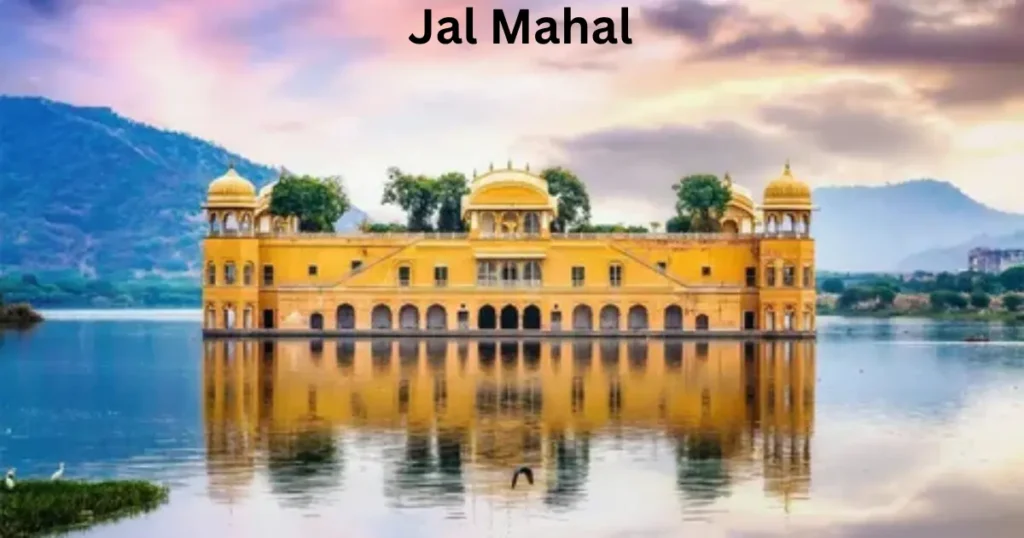
Situated in the serene Man Sagar Lake, Jal Mahal—literally meaning “Water Palace”—is one of Jaipur’s most picturesque landmarks. With the Aravalli hills in the background and the calm waters surrounding it, this stunning five-storey palace creates a magical reflection that mesmerizes visitors, especially during sunrise and sunset.
Historical Background
Jal Mahal was built in the 18th century by Maharaja Madho Singh I as a pleasure palace and hunting lodge.Its Rajput-Mughal architectural design made it a haven for the royal family, particularly when they went duck hunting in the nearby lake.
Not Open for Public Entry
Visitors are not allowed to enter the Jal Mahal itself, as access to the interior is restricted by the Rajasthan government to preserve the site’s structural integrity and ecological balance.
Tourists can enjoy the view from the Man Sagar Lake promenade, which is lined with local vendors, handicraft stalls, and snack shops, making it a lively yet peaceful place to explore.
Photography Hotspot & Romantic Ambiance
Undoubtedly, one of Jaipur’s most photographed locations is Jal Mahal. The peaceful ambiance, combined with stunning views, also makes this location a favorite for couples and honeymooners. The gentle breeze, the soft ripples on the water, and the distant sound of birds make it a romantic escape in the heart of the Pink City.
Best Time to Visit & Entry Information
The most pleasant time to visit Jal Mahal is during the winter months, from October to March. The weather during this season is cool and comfortable, making it ideal for sightseeing, photography, and enjoying the scenic beauty of Man Sagar Lake.
Entry Information
Currently, entry inside Jal Mahal is restricted to the general public. Tourists can view and photograph the palace from the banks of Man Sagar Lake along the Amer Road promenade.
9-Birla Mandir (Laxmi Narayan Temple)

The Birla Mandir, also known as the Laxmi Narayan Temple, is one of the most tranquil and spiritually uplifting places to visit in Jaipur.
Dedicated to Lord Vishnu (Narayan) and Goddess Laxmi, the deity of wealth and prosperity, Birla Mandir offers more than just a religious experience—it offers a moment of calm amidst the vibrant chaos of Rajasthan’s capital city.
Religious Significance
The temple is dedicated to Laxmi Narayan, the union of Goddess Laxmi, the goddess of wealth, and Lord Vishnu, the preserver of the cosmos.
Although it is a place of worship, Birla Mandir welcomes visitors from all backgrounds and faiths. It is more than just a place of pilgrimage; it is a representation of world peace.
Don’t Miss the Evening Aarti
One of the most enchanting experiences at Birla Mandir is attending the evening aarti (ritual prayer). It is more than just a place of pilgrimage; it is a symbol of global peace. The aarti is accompanied by chanting, conch shell sounds, and rhythmic bells, creating a spiritually moving atmosphere that attracts both devotees and tourists.
The aarti typically starts around sunset, and it’s best to arrive 15–20 minutes early to find a good spot.
Visitor Information
| Timings | Morning: 6:00 AM – 12:00 PM Evening: 3:00 PM – 9:00 PM |
| Entry Fee | Free for all visitors |
| Photography | Allowed outside; inside photography may be restricted |
| Best Time to Visit | During the evening aarti or early morning for a peaceful experience |
10-Chokhi Dhani – Cultural Village Resort in Jaipur
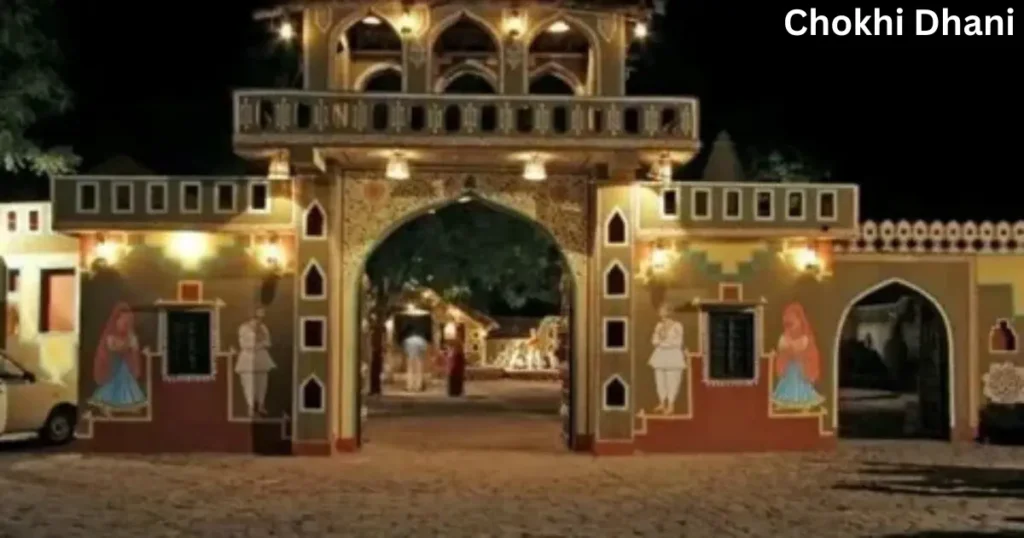
Experience the vibrant spirit of Rajasthan in one place, Chokhi Dhani is your perfect destination. Located on the outskirts of Jaipur, this ethnic village resort offers an immersive cultural experience with traditional Rajasthani dance, music, food, crafts, and entertainment.
Cultural Performances & Entertainment
Chokhi Dhani hosts a variety of live cultural performances every evening, which showcase Rajasthan’s rich traditions:
Folk Dances
- Ghoomar and Kalbeliya dancers mesmerize the audience with their swirling costumes and graceful moves.
- Bhavai dance performers balance multiple pots on their heads while dancing on glass or sword edges.
Live Music & Singing
- Local musicians play traditional instruments like sarangi, algoza, and dholak to keep the vibe festive and energetic.
Puppet Shows
- Traditional Kathputli (puppet) shows narrate folk tales and stories from Rajasthani legends—fun for both kids and adults.
Camel & Elephant Rides
- Ride decorated camels or elephants and explore the village from a higher view, just like the royals of Rajasthan.
Why Visit Chokhi Dhani?
- Perfect for families, foreign tourists, students, and corporate groups
- Experience Rajasthani village life without leaving Jaipur
- A great evening activity after a day of sightseeing
- Suitable for all age groups
Visitor Information
| Timings | 5:30 PM – 11:00 PM (Daily) |
| Entry Fee (Approx.) | Adults: ₹750–₹1200 (depending on dining option) Children: ₹450–₹800 |
| Dining Options | Basic Village Thali, Royal Rajasthani Thali, AC dining (different pricing tiers) |
| Recommended Time to Spend | 3–4 hours |
Note: It’s advisable to check for the latest ticket prices and event availability on the official Chokhi Dhani website or at the gate.
Tips for Traveling to Jaipur
The best time to visit Jaipur is from October to March, when the weather is pleasant and ideal for sightseeing. To explore the city, you can choose from auto-rickshaws, cabs (Ola/Uber), local buses, or even walk through old city lanes to experience local culture up close.
Most monuments in Jaipur charge an entry fee, with discounts for students and combo tickets available.
When visiting temples and heritage sites, dress modestly and respect local customs and traditions. Stay aware of your belongings in crowded areas and always carry water and sunscreen. With a little preparation, Jaipur offers a vibrant, safe, and unforgettable travel experience.
What to Carry
You Should be prepared for Jaipur’s weather and activities:
- Sunscreen, sunglasses, and a hat for daytime sightseeing
- Light cotton clothes in summer; a light jacket in winter mornings and evenings
- Reusable water bottle (stay hydrated)
- Power bank and universal plug adapter
- Comfortable footwear for walking through forts and markets
Conclusion
Jaipur is a city that offers royalty, culture, food, and adventure—all in one place. With thoughtful planning, cultural awareness, and a few practical tips, your visit can be as comfortable and safe as it is memorable.
Whether you’re admiring the grandeur of Amber Fort, shopping for gems in Johari Bazaar, or enjoying street food near Jal Mahal, the Pink City will leave you enchanted with its charm and hospitalit
FAQs – Places to Visit in Jaipur
1. What are the must-visit tourist attractions in Jaipur?
Some of the top attractions include Amber Fort, City Palace, Hawa Mahal, Jantar Mantar, Nahargarh Fort, Jal Mahal, and Albert Hall Museum.
2. What is the best time of year to visit Jaipur?
The best season is October to March, when the weather is pleasant for sightseeing.
3. How many days are enough to explore Jaipur?
Typically, 2–3 days are enough to cover the major attractions comfortably.
4. Are entry fees charged at Jaipur’s monuments?
Yes, most major attractions have entry fees that vary for Indian and foreign tourists. Some also have separate charges for cameras.
5. What is the best way to travel between attractions in Jaipur?
Options include auto-rickshaws, cabs, local buses, and self-drive rental cars.


